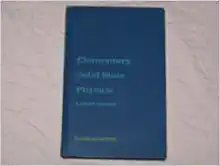Question
Activity 3 Buoyancy and Archimedes principle (4pts) Open the PhET simulation Density and go to the tab Intro. 1. On the lower right corner of
Activity 3 Buoyancy and Archimedes principle (4pts)
Open the PhET simulation Density and go to the tab Intro.
1. On the lower right corner of the screen, select the icon with one box. On the upper right corner of the screen, select Wood as material A. Move the mass cursor to 4.00 kilograms. The volume automatically will change to 10.00 liters. Why? [Answer]
2. If you completely submerge the wooden box into the water tank by keeping it down, the volume of water displaced is exactly 10.00 L. If you let the wooden box float, the volume displaced is different.
please the new volume marked in the tank. [Answer]
3. Include a screenshot of your simulation page for the point (2). [Screenshot]
4. Now that the box is in equilibrium floating, two forces are acting on it. Can you tell which forces and in which direction respectively are acting? [Answer]
5. Calculate the numerical value of the forces. Use acceleration of gravity equal to 10 m/s2 and water density 1.00 kg/L. We expect these two numbers to be equal to each other. Show all your work.
| Force name and formula | Substitute the numbers and find the value (Include the units in your answers) |
| force 1 | |
| force 2 |
6. If you push down the object into the water, the displaced water volume on the tank increases. What do you think will happen to the buoyant force? Is it increasing, decreasing, or it stays the same? Why? [Answer]
7. On the lower right corner of the screen, select the icon with two boxes. On the upper right corner of the screen, select the materials A and B of your choice between Styrofoam, Wood, Ice, Brick, and Aluminum, but one object should float and the other should sink.
8. Set the same volume for the two objects, for example, select 5.00 L for both materials. Place the objects in the water tank. The buoyant force is acting on both objects. On which object is the buoyant force greater? And why? [Answer]
9. Move the floating object deep down into the bottom of the tank and then release it. What happened and why? Please explain in terms of forces acting on the object. [Answer]
Activity 4 Pressure (4pts)
Open the PhET simulation Under Pressure.
Hydrostatic pressure is connected to the depth of the liquid's column above the surface area, where the pressure is measured. These last activities challenge you to find the relation between these two quantities: pressure p and depth h.
On the screen, you should have one tank filled with water. Change the fluid into one of your choice.
Maintain the acceleration of gravity to 9.8 m/s2 . On the upper right corner of the page, check Ruler, Grid, and Units for the Metric system.
In the simulation there is a Pressure sensor that you can use to evaluate the pressure at different depths down along the fluid in the tank.
1. Place the Ruler with the zero mark exactly at the surface of the liquid.
2. Completely fill out the tank with the fluid. Write here the fluid you are using: __________[Answer]
3. Starting from the top surface of the liquid, move the Pressure sensor each time 0.2 meters down in the tank. Use the Ruler as a guide for your measurements.
4. Insert here a screenshot of your simulation page. [Screenshot]
5. Complete the table below.
| Depth h (m) | Pressure (kPa) |
| 0 | |
| 0.2 | |
| 0.4 | |
| 0.6 | |
| 0.8 | |
| 1.0 | |
| 1.2 | |
| 1.4 | |
| 1.6 | |
| 1.8 | |
| 2.0 | |
| 2.2 | |
| 2.4 | |
| 2.6 | |
| 2.8 | |
| 3.0 |
Activity 5 Make a plot (continue from Activity 4) (4pts)
1. Copy and paste the table above on a spreadsheet.
2. Plot a chart of Pressure (p) versus depth (h). For help on how to plot, please check the Video How to make a plot.
3. Do not forget to add the axes labels and the title to your plot. On the title write your name.
4. If two quantities are directly proportional to each other, when one quantity is increasing the other is also increasing always at the same rate. In your plot, do you see that this condition is verified? [Answer]
5. Using the plot as a guide, can you estimate approximately what would be the pressure for a deeper height like ? [Answer]
6. Copy and paste your plot here below. [Paste your plot]
Step by Step Solution
There are 3 Steps involved in it
Step: 1

Get Instant Access to Expert-Tailored Solutions
See step-by-step solutions with expert insights and AI powered tools for academic success
Step: 2

Step: 3

Ace Your Homework with AI
Get the answers you need in no time with our AI-driven, step-by-step assistance
Get Started


